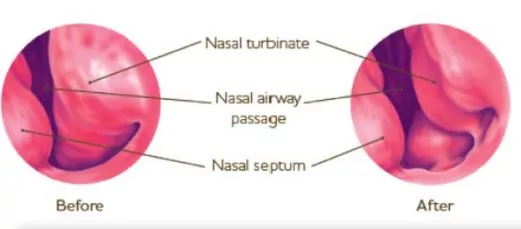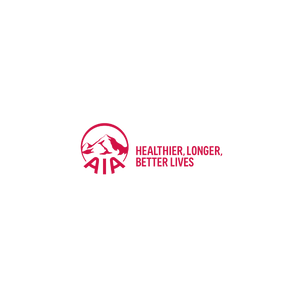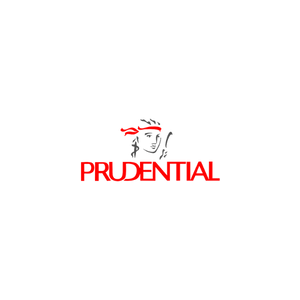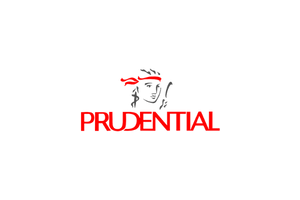Inferior Turbinate Reduction
Home | Services | Sinus Conditions | Inferior Turbinate Reduction
What Is The Inferior Turbinate Reduction Procedure?
Turbinate reduction surgery reduces the size of enlarged inferior turbinates in the nose and can be an effective blocked nose treatment. There are a variety of ways where this can be done in-clinic under local or general anaesthesia.
Turbinate reduction surgery reduces, removes or displaces the enlarged turbinate soft tissue, through different cutting-edge technologies involving radiofrequency energy or conventional tissue removal, creating more space in the nasal cavity. There are pros and cons of turbinate reduction surgery which will be discussed below.

What Are The Pros And Cons Of Turbinate Reduction?
What Are The Pros And Cons Of Inferior Turbinate Reduction?
All patients who come to us want to know the pros and cons of inferior turbinate reduction surgery. Nasal breathing is essential to our health and well-being. Breathing through the nose cleans the air we inhale, warms it before getting to our lungs, and also increases oxygen intake by boosting innate chemicals in our nose to expand our blood vessels. This procedure can significantly improve a stuffy or blocked nose and improve difficulty breathing.
In certain cases, over-aggressive reduction of the inferior turbinates can lead to conditions such as atrophic rhinitis and empty nose syndrome. However, with our extensive experience, this is highly unlikely to occur.
How Does Inferior Turbinate Reduction Work?
It works by shrinking the inferior swollen turbinates, and reducing inferior turbinate hypertrophy, thus removing any obstruction and allowing a clear flow of air through the nasal cavities and nasal passages. Thus, the surgery reduces the size of this obstruction, while preserving the very important functions of the nasal turbinates. There are many different techniques that can achieve this. Examples of temporary but long-lasting techniques include radiofrequency inferior turbinate reduction or coblation of the inferior turbinates. Permanent techniques include powered inferior turbinoplasty or inferior turbinectomy.

What Are The Benefits Of This Procedure?
Nasal breathing is essential to our health and well-being. Breathing through the nose cleans the air we inhale, warms it before getting to our lungs, and also increases oxygen intake by boosting innate chemicals in our nose to expand our blood vessels. These functions are primarily performed by turbinates – small structures inside the nose that filter and humidify air passing through.
The primary benefit of inferior turbinate reduction surgery is reduction of swollen tissues in the nasal cavities, providing relief of a blocked or stuffy nose, resulting in decreased nasal congestion and easier breathing. This is one of the treatment options that can significantly alleviate this issue, improving your quality of life.
Mouth breathing instead of nasal breathing can cause the following:
Snoring
Snoring can disrupt the sleep of both the patient and their partners. Sleep is essential to leading a high-functioning, healthy daily lifestyle, and inferior turbinate reduction can restore a peaceful night’s sleep.
Difficulty Sleeping
When we sleep, we tend to breathe through the nose. If the inferior turbinates are enlarged, thus preventing a clear flow of air, it can be difficult for patients to fall asleep. Inferior turbinate reduction can address this.
Epistaxis (nosebleeds)
Struggling to inhale air through the nasal cavities can also lead to the drying of mucus membranes lining the passageway, making the nasal passages and nasal septum more sensitive and prone to bleeding.
Decreased sense of smell and taste
Having a blocked nose due to turbinate enlargement often leads to a sensation of sinus pressure and a reduced sensation of smell and taste, leading to less enjoyment taken from food and even potential weight loss.
What Are The Complications, Risks And Alternatives Of Inferior Turbinate Reduction?
Bleeding
Bleeding is a possibility in any nasal or sinus surgery as the blood supply is extensive. Occasionally, significant bleeding may occur requiring termination of the procedure and nasal packing. This usually requires hospitalization for observation. Blood transfusions are rare, as is the need for subsequent surgery to control bleeding. However, certain precautions are necessary, such as the avoidance of all certain painkillers as well as supplements such as garlic, ginseng, and gingko for a period of 2 weeks before surgery. Patients on long-term blood thinning agents can still undergo surgery though their medication regime or type may need to be temporarily altered.
Crusting
A few days after surgery, crusts and scabs will begin to form inside the nose. These may temporarily block breathing and lead to nasal obstruction. Nasal saline irrigations are key in keeping the nose clean and free of any debris. Crusting usually resolves as the lining of the nose heals, in approximately 2-4 weeks after surgery.
Empty Nose Syndrome
Empty nose syndrome is a very unpleasant condition characterized by a wide open, dry nose that drips and feels blocked. Patients complain bitterly of nasal blockage while their doctors insist that their noses are wide open. The nose appears dry and crusty on examination, but drains constantly. This is a very rare complication of the procedure. With the advent of radiofrequency treatments and newer surgical treatments for the turbinates, this complication is rarely seen.
Lack Of Improvement In Nasal Obstruction
Enlarged inferior turbinates are not the only cause of a blocked nose. Other conditions such as a deviated septum, nasal valve narrowing / nasal valve collapse or chronic sinus infections can all cause nasal blockage. A proper evaluation of your nose will be performed before an appropriate treatment is recommended.
Alternatives to Surgery
These procedures are the only permanent ways to relieve nasal blockage. Medical treatment such as decongestant nasal sprays and intranasal steroid nasal sprays can also be used to decrease the size of the turbinates. However, they may only provide relief when the medications are being used, with the problem returning when medication is stopped.
Frequently Asked Questions
Is Inferior Turbinate Reduction Surgery Painful?
In general, the procedure is well tolerated in most patients. The combination of both topical and local anaesthesia provides a pain-free experience during the quick procedure.
Can Turbinates Grow Back After Reduction?
Inferior turbinate reduction, via powered turbinoplasty or turbinectomy is permanent. These two methods remove both turbinate tissue and bone, resulting in an overall decrease in turbinate hypertrophy. If alternative methods such as radiofrequency reduction of the inferior turbinates or coblation of the inferior turbinates are used, the patient may require a repeat procedure at a future point in time, as these methods do not involve definitive tissue or bone removal.
What Are Some Pros And Cons Of Turbinate Reduction?
Nasal breathing is essential to our health and well-being. Breathing through the nose cleans the air we inhale, warms it before getting to our lungs, and also increases oxygen intake by boosting innate chemicals in our nose to expand our blood vessels. Turbinate reduction can relieve a stuffy nose and help with this.
In certain cases, over-aggressive reduction of the inferior turbinates can lead to conditions such as atrophic rhinitis and empty nose syndrome. However, with our extensive experience, this is highly unlikely to occur.
How Long Does It Take To Recover From Turbinate Reduction?
If radiofrequency ablation of the inferior turbinates is performed (RFIT), the patient can go back to work on the same day. Total recovery time is approximately 2-3 weeks, where normal activities of daily living can still be performed.
If the patient has opted for turbinoplasty, the total recovery time may be longer, approximately 4-6 weeks. However, the patient should be able to return to normal activities after the first week.
Will My Nose Look Different After Turbinate Reduction?
This is a surgical procedure which is performed entirely inside the nose. There are no external scars or incisions. No change in the shape or outward appearance of the nose should be expected after the procedure.
What Not To Do After Turbinate Reduction?
Patients are advised to rest and recover after the procedure. Complications such as bleeding from the nose may result if the patient participates in vigorous activities such as jogging, lifting weights and cycling. Patients are advised to refrain from such activities for a period of at least 1-2 weeks. Patients are also advised not to blow their nose hard or smoke in the first 1-2 weeks as this may precipitate bleeding and impair healing.
How Do I Clean My Nose After Turbinate Reduction?
Patients will expect some degree of nasal crusting and nasal debris after the procedure. Nasal rinses are recommended, and this may take the form of neti pots or nasal douches. Nasal rinses should be used until all the debris is clear, usually 3-4 weeks.








